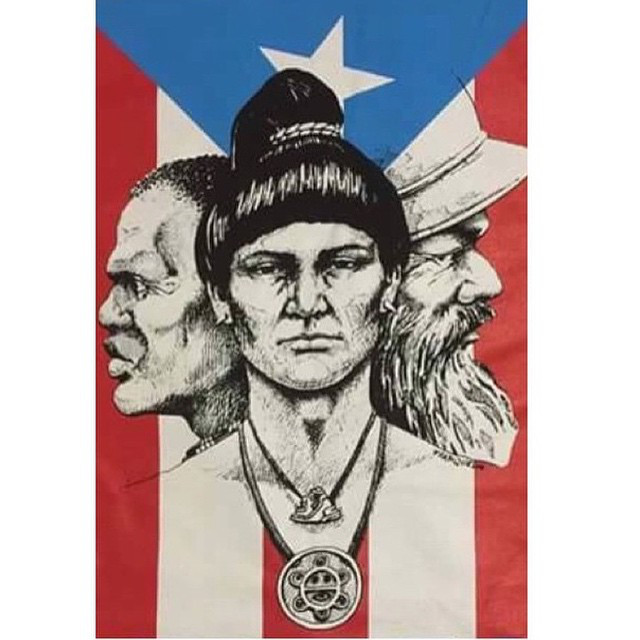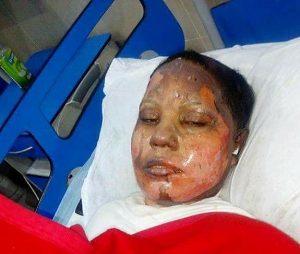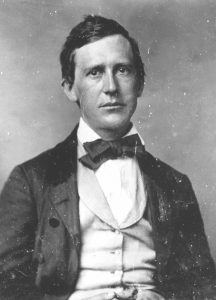In 1493, on his second voyage to the Americas, Christopher Columbus discovered Puerto Rico, an island that he named San Juan Bautista. On his first trip, Columbus, as we know, discovered La Española (Hispaniola), which is today the countries of Haiti and the Dominican Republic. In a failed attempt to reach La Española on his second trip, Columbus landed on Puerto Rico, where he was received by the Taíno Indians, who were of the same ethnic group as the people of La Española and the other islands in the Caribbean.1
Months after reaching the Island, the Spaniards started the process of colonizing the Taíno Indians, led by Juan Ponce De Leon, who was one of the conquistadors that came with Columbus. Later, in 1508, De Leon became the first governor of San Juan Bautista. During this process of colonization, the Taíno Indians did not show resistance because they believed the Spaniards were gods. The reason they saw the Spaniards as gods was because there had been a Taíno legend that spoke of a time when gods were going to rise from the water to give salvation to the Taíno. This legend facilitated the process of colonization for the Spaniards, since they did not encounter any native resistance. Within a short time they had created villages and colonies. By the beginning of the 1500’s, the Taíno natives were working in gold mines and plantations. In 1514, the Taíno decided to take matters into their own hands and rebel against their Spanish overlords. What resulted was one of the most brutal genocides in Latin American history. More than 25,000 Taíno Indians were murdered by the Spaniards on the Island of San Juan Bautista. This means that 85-90% of their population had been killed at the hands of the Spaniards. After the rebellion, the Spaniards noticed that the natives that had survived were not enough to fulfill their labor requirements. They decided to search for a new work force.2
After the massacre of 1514, the Spaniards noticed that they needed a new “work force,” as they called their slaves; so in 1518 they started importing African slaves from the Gulf of Guinea. The slaves started to reach the island later that year, and became the new “work force” of the Spaniards along with the small number of Taíno Indians that had survived the massacre. This caused more problems, since the Spaniards and the Africans brought a variety of diseases to the Island, such as small-pox and measles. Approximately two million Taíno Indians that lived on the islands of the Caribbean died from these diseases. By the late 1500’s there were no more Taíno Indians left on the island of San Juan Bautista; only the children of those who intermarried with the Spaniards and Africans survived. Of course, the Taíno, Africans, and Spaniards intermarried through time, and this is why Puerto Ricans today have such a diverse racial heritage; but the original Taíno racial group became extinct by around 1600. By that time the island of San Juan Bautista had become one of the most important colonies in the Caribbean. The Spaniards now had a way to export their products to the rest of the Caribbean and Latin America through this island, giving them an economical advantage. In less than thirty years the Spaniards took the Taíno land, men, women, and children, and virtually erased a whole population from the face of the earth. Most people consider Christopher Columbus as one of the greatest explorer to ever live, and as a hero of sorts, but have they taken into consideration the many civilizations in the Americas that have been affected by him? Not only the Taíno population, but also the Aztecs, the Incas, and many other societies throughout the Americas were affected significantly by this Columbian moment in history.3
- Roberto Marquez, “Sojourners, Settlers, castaways and creators: A recollection of Puerto Rico past and Puerto Rico present,” Massachusetts Review 36, no. 1 (1995): 94. ↵
- Robert M. Poole, “What Became Of The Taíno?” Smithsonian 42, no. 6 (October 2011): 58. ↵
- Byron Cannon, “West Indian Uprisings,” Salem Press Encyclopedia (January 2016): 583-586. ↵



64 comments
Jean Jackson
The Indians were no angels.
Zuly Cardona
On most of these comments people are saying Columbus killed, maimed, and otherwise took out an entire population of people. Not so fast, it was the Spanish Soldiers that committed those atrocities. Cristobal Colón was an explorer and during his explorations he found new territories that were unknown in Europe, in fact, discovering A NEW WORLD! Let’s put it into the correct perspective please.
LUKE GARCIA
I am living proof that Taino still exist. My father side is Taino from Arecibo and my mother side Spanish from Barranquitas.
It’s a shame Spanish Conquistadores took matters into their own hands. I wish someday they’ll pay for what they’ve done to us. Not only us Taino but to the deaths they have caused to the Aztecs and the Incas.
Alexa Casares
This is an interesting piece! It is crazy to see how much we are still learning today!
Andrick Ferrer
It boggles me how people in our day today still find ways to make Spaniards feel bad for their country’s past when it really happened thousands of years ago. Of course, many of the atrocities and troubles that the Spaniards caused were wrong but there is no reason for Spaniards today to receive backlash for the mistakes of their ancestors. To support this, I am a Puerto Rican myself. Andres, although this is a short article, it is concise and informative.
Madeline Chandler
Such an informative and interesting article! Very captivating. Honestly, I am vaguely familiar with the story of the Columbus and the colonization of Puerto Rico, yet I did not know all of the information so in depth. It is so unfortunate that the Native tribe of the Taino Indians were conquered for the sake of exploration and thus converted into slaves. This article shows the first step of colonization of the new world. I loved reading your article. Great job!
Daniel Gimena
Good article about a specific territory conquered in the first expeditions of Columbus. Personally, I had never read about the colonization of Puerto Ricos, and it was very interesting to read about a Native civilization I had never heard about; the Taínos. I think that the story of this island is the perfect example on a small scale of how the process of colonization of the Americas worked.
Mar Q
It’s mind boggling how people, especially Puerto Ricans themselves, still perpetuate this colonial mentality, making Spaniards sound like gods still. And by the way, the way this is parsed made it sound that the Taíno people were dumb and that they deserved to be colonized somehow for mistaking Spaniards for gods. At least tell the story of Agüeybaná II. Yes, he was defeated, but he fought.
Please stop saying Christopher Columbus discovered. He invaded. There were people–human beings–on those lands already. You can’t say Christopher discovered them. They weren’t artifacts.
And what a way of brushing over the atrocities committed by the Spaniards when they INVADED Boriquen and other lands! Colonization has been one of the biggest evils perpetrated on humanity. White people is a plague upon this Earth. They’re the worst pandemic ever.
Let me put it in a bit of context. The Spaniards (and other Europeans) were monsters. They raped; they committed genocide. They brought dogs to the island to sic them on the Taínos. One of the games they played for fun was to leave the dogs starving for days and then feed them Taíno babies. Now you tell me again about the discovery.
Maria Luevano
It amazes me to find out after all these years of learning that the Indians already established in Puerto Rico considered Christopher Columbus and his crew to be gods. I did not know this, however, I did know about the rebellion and the massacre that followed. It saddens me that there could’ve not been peace between the Spaniards and the Taino natives. The massacre sadly led to the use of slaves which is also a sad moment in history.
Mar Q
This whole story of the Taínos believing that the Spaniards were gods is too simplistic. There’s a lot more to it than this. This is just the typical, almost benevolent, version fed Puerto Ricans and the world to make Taínos sound like dumb doormats. And saying that the massacre “sadly led to the use of slaves” sounds ridiculous to my ears. I mean are you hearing yourself? What do you think would’ve happened had there not been a massacre? Peace? Are you kidding me? The colonizers weren’t after peace. They were greedy and cruel and were after total dominance, they wanted it all. This meant enslaving, genocide, raping. Did you know that when the Spaniards started killing, raping and enslaving, mothers with their babies and young children committed suicide in groups? They preferred to die and for their children to die free rather than being subjected to the cruelty of the colonizers and becoming slaves.
Colonization is an evil perpetrated upon this Earth. White people didn’t stop with the Americas. In fact, I guess, it was their success at colonizing the peoples of the Americas that gave them the idea that conquering other lands where non white lived was a fair game. Have you read what they did in Africa, Australia and Asia. Let me give you an idea. The Belgians used to cut off the hands and feet of children as punishment for parents failing to bring a quota of some crappy thing. The deaths estimated by colonialism were between 1 million to 15 million. We will never know.
Daniel Matheu Baldor
As a Spaniard, I can’t feel fully proud of my history. Although we brought some good stuff and we mixed our cultures, we can’t not live aside all the atrocities committed by the Spaniards during the conquest, although it is true that those were different times and, from my point of view, you can’t judge what happened more than five centuries ago with the mentality of the 21st Century.